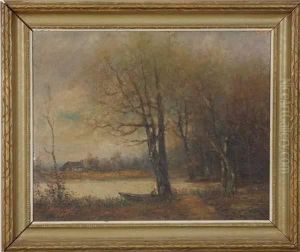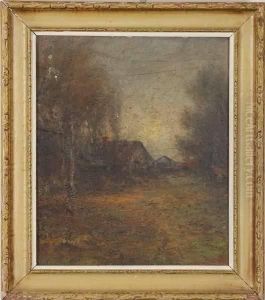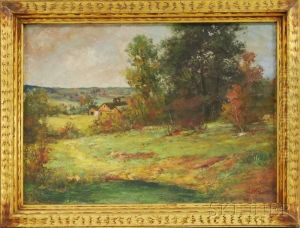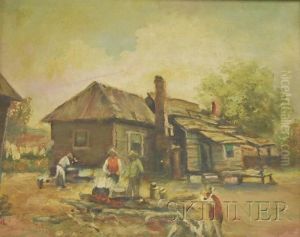Arlington N. Lindenmuth Paintings
Arlington Nelson Lindenmuth was an American painter, known for his landscapes, portraits, and still life paintings. Born in 1856 in Allentown, Pennsylvania, Lindenmuth was part of the early American Impressionist movement, although he also explored other styles throughout his career. He grew up in a time when American art was beginning to find its voice, separate from European traditions, and he was among the artists who contributed to this emerging identity.
Lindenmuth's education in art began at the Pennsylvania Academy of the Fine Arts, where he studied under the tutelage of Thomas Eakins, a giant in American art history known for his realism and psychological depth in portraits. This early influence is evident in Lindenmuth's careful attention to detail and his interest in capturing the character of his subjects. However, as his style developed, he increasingly incorporated Impressionist techniques, adopting a lighter palette and a looser brushwork that captured the transient effects of light and atmosphere.
Throughout his career, Lindenmuth remained deeply connected to his roots in Pennsylvania, often depicting the landscape and people of his home state. His works not only reflect the beauty of the American landscape but also offer insights into the life and times of his era. In addition to his landscapes and portraits, Lindenmuth also excelled in still life painting, showcasing his versatility and keen observation skills.
Lindenmuth was active in the art community, participating in exhibitions and becoming a member of various art associations. Despite his contributions to American art, he did not gain the same level of fame as some of his contemporaries. Nevertheless, his work has been appreciated by art historians and collectors who recognize his talent and the role he played in the development of American Impressionism.
Arlington N. Lindenmuth's legacy is preserved in the collections of several museums and galleries, as well as in the appreciation of art enthusiasts who continue to be moved by his depictions of the American landscape and life. He passed away in 1950, leaving behind a body of work that continues to be studied and admired for its beauty and historical value.



